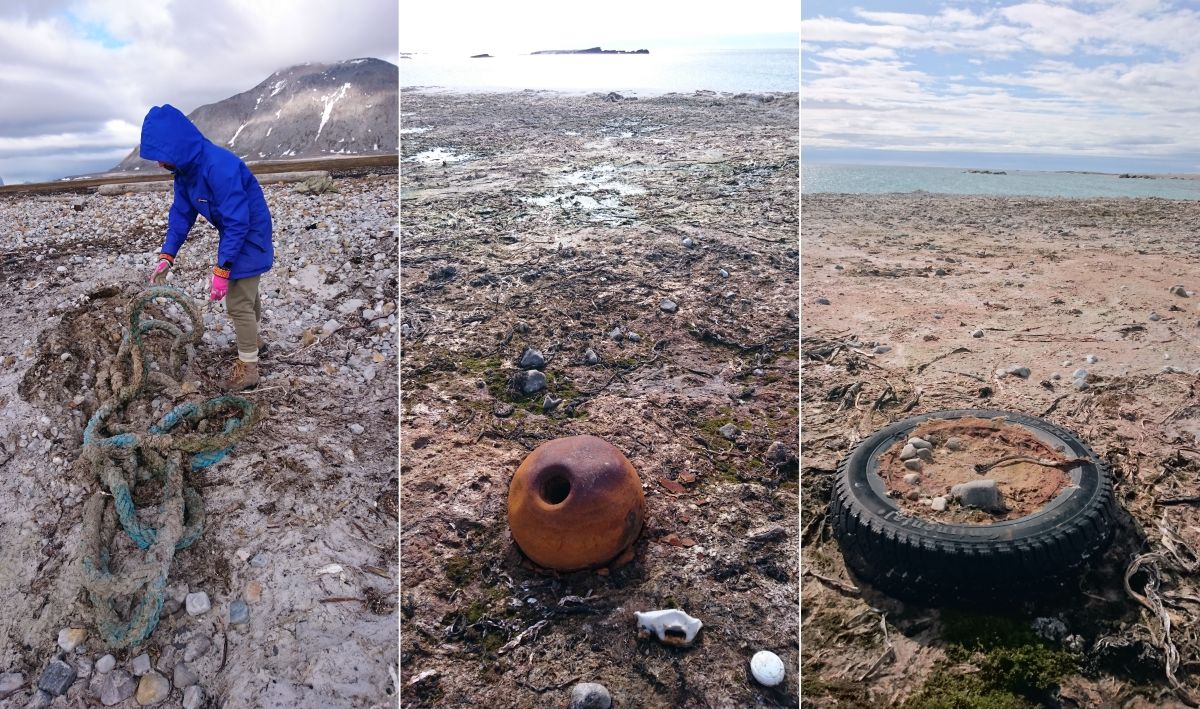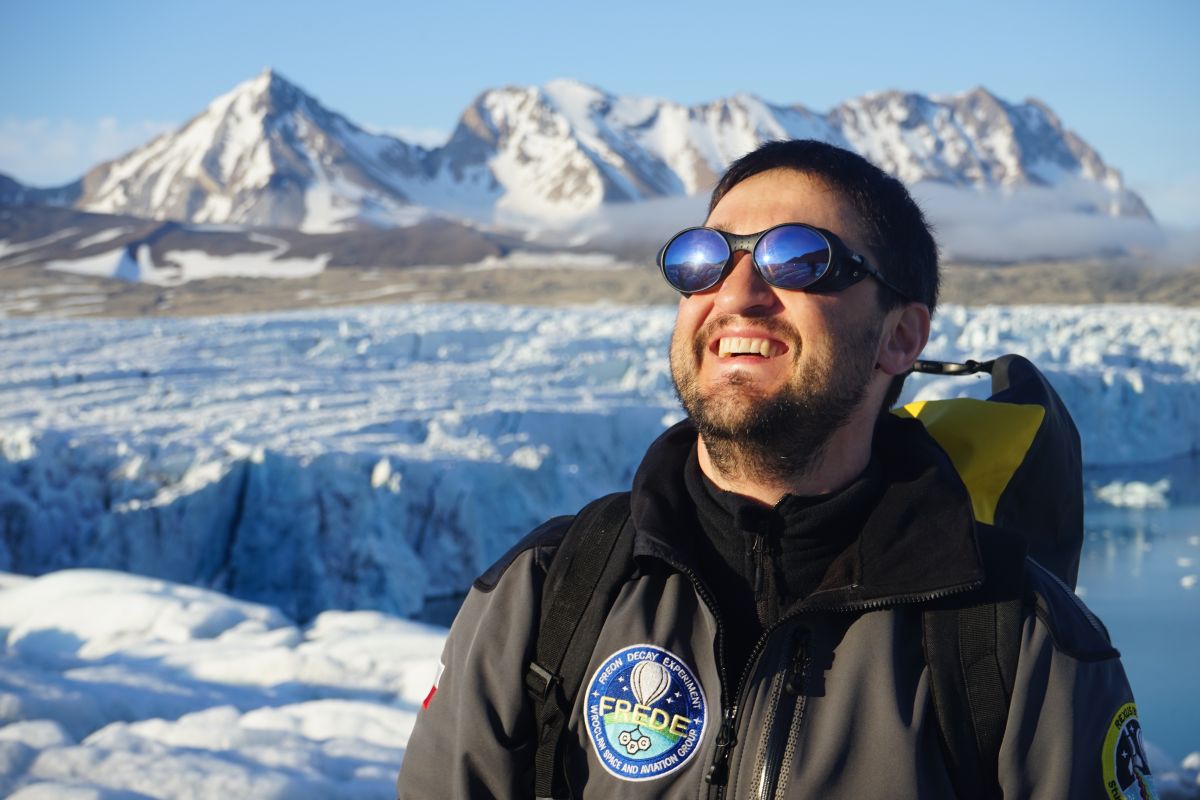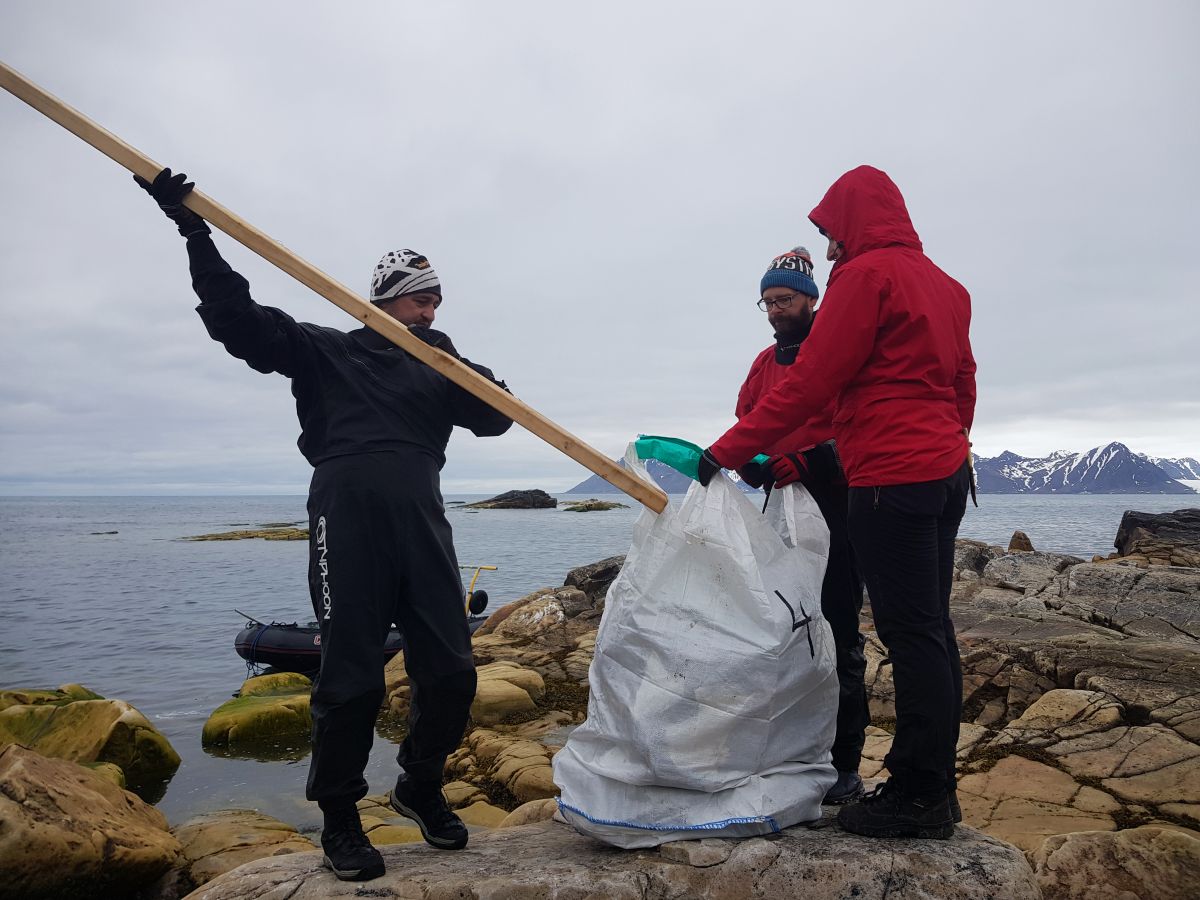YOUR BROWSER IS OUT-OF-DATE.
We have detected that you are using an outdated browser. Our service may not work properly for you. We recommend upgrading or switching to another browser.
Date: 17.08.2019 Category: general news, science/research/innovation, student activity
The Sorkapp Marine LitterCleanup project has collected almost four tons of various types of waste when cleaning up a part of the coastline of the island of Spitsbergen protected by a national park. - There were sections where I had a bag full of rubbish after five minutes - says Jędrzej Górski, a PhD student from WUST, one of the members of the scientific expedition. - It’s sad and alarming that this place is so polluted.
 Fishermen's nets, ropes, and buoys, plastic bottles after cosmetics, detergents, and juice, medicine packages, light bulbs, and even car wheels - all this was found on the coast of Svalbard by the participants of the Sorkapp Marine LitterCleanup project. Cleaning up this part of the Arctic is part of the forScience Foundation's initiative, which is possible thanks to the funding from the Svalbard Environmental Protection Fund.
Fishermen's nets, ropes, and buoys, plastic bottles after cosmetics, detergents, and juice, medicine packages, light bulbs, and even car wheels - all this was found on the coast of Svalbard by the participants of the Sorkapp Marine LitterCleanup project. Cleaning up this part of the Arctic is part of the forScience Foundation's initiative, which is possible thanks to the funding from the Svalbard Environmental Protection Fund.
Six people spent a month in Palffyodden, located at the entrance to the Hornsund fjord, in the southern part of the island of Spitsbergen, cleaning the coastal section of the Sor-Spitsbergen National Park. When they were leaving Poland for Svalbard, they were planning to clean up 23 kilometres of land. Eventually, they managed to cover a distance of 15 km, from where they collected as much as 3.7 tons of rubbish.

- There’s really a lot of rubbish there - says Jędrzej Górski, a PhD student from the Faculty of Mechanical Engineering at Wrocław University of Science and Technology, who was one of the participants of the expedition. - About 90 per cent of the rubbish we collected was found within 20-30 meters from the coastline, largely due to the character of the terrain, which can be seen in the photos. Strong winds, and sometimes even storms, moved some of the waste far inland. What we found there kept surprising me. It was rubbish of almost every kind. Once we even came across a package used for Chanel perfume - he says.
The participants of the expedition stayed overnight in a run-down wooden hut called "Kapp Horn Hytte". From there, they would set out for a specific section of the coastline, planned to be cleaned on a given day. Sometimes the trip would take several minutes, but in less favourable weather conditions - even more than an hour. Due to the unfavourable weather conditions, the team was not able to cover the entire part of the coast planned for cleaning.
The PhD student emphasises that he had not expected a few factors including how difficult it would be for him to rest when the sun does not set outside the window.
 - I found white nights to be too hard to cope with. On some days, I was on my feet for 24 hours, completely unable to fall asleep - he says. - Even when I was very tired, because there were days when we worked ten to eleven hours, my body expected it to get dark so that it could rest.
- I found white nights to be too hard to cope with. On some days, I was on my feet for 24 hours, completely unable to fall asleep - he says. - Even when I was very tired, because there were days when we worked ten to eleven hours, my body expected it to get dark so that it could rest.
He brought not only memories of littered beaches from Svalbard but also stories about a place filled with whale skeletons or about an encounter with a polar bear.
The participants of the Sorkapp Marine Litter Cleanup project first segregated the waste and then transported it to the Polish Polar Station Hornsund with the help from the members of the 42nd Polar Expedition of the Institute of Geophysics of Polish Academy of Sciences. From there, it will be taken to the capital of Svalbard, Longyearbyen, where it will be transferred for disposal.
To find out more about the Sorkapp Marine Litter Cleanup project, visit the For Science Foundation website and on its Facebook profile.
Our site uses cookies. By continuing to browse the site you agree to our use of cookies in accordance with current browser settings. You can change at any time.